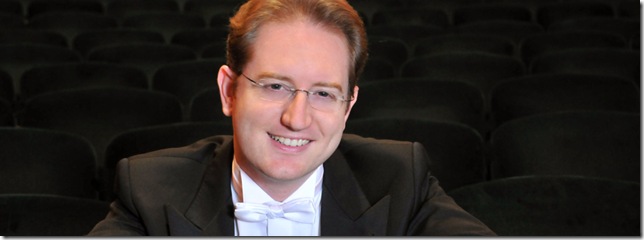What could top an all-Bach program? I’ll tell you: The arrangement of the orchestra in the octagonal DeSantis Chapel at Palm Beach Atlantic University.
Seating for the Feb. 27 concert was in a great circle with orchestra and soloists in the center. “Switch seats after the intermission, and look into the conductor’s eyes,’’ suggested the symphony’s new executive director, Michael Finn.
I did. It was a new concert-going experience, with permission to jump seats.
But the best part was that the excitement of making music in the round was palpable. From the moment the orchestra members walked in briskly from opposite sides of the octagon the audience sensed the new energy circulating around the room, applauding vigorously. Bowing individually, orchestra members stood to play, except celli and double bass.
Beginning with the Orchestral Suite No. 2 (in B minor, BWV 1067), which opens with an overture in the French style, it was evident the new arrangement in the round is an improvement over the “trapped” sound when the orchestra was seated in the chancel area.
The lovely sweeping Rondeau, familiar to listeners, had a strong flute presence, beautifully played by Karen Dixon. The Sarabande movement was more a lament than a dance, ending with a lovely flute solo. Bourrée No. 1 followed, with orchestra and flute striking a fine balance, and the Bourrée No. 2 was strident and confident, with difficult flute obbligatos accompanied by the cellos.
The final section, Badinerie, is without doubt the most familiar music in this piece, and a staple of the flute literature. Orchestra and soloist go at it full throttle, and Dixon was superb.
Concerto No. 3 for two pianos (in C minor, BWV 1062) was next, with soloists Nicolas Horvath from Monte Carlo and Giovanni Guastini of Florence. There was a weak moment at the start of the Allegro when a page turner didn’t act fast enough, leaving the pianist out to dry. The recovery was quick; conductor Ramon Tebar picked up the tempo and all was well. The Andante – so familiar to those who know the Oistrakh/Menuhin double-violin arrangement — sounded just as lovely on two pianos. And the final Allegro received spirited playing from the orchestra.
Concerto No. 2 (in C major, BWV 1061), also for two pianos, with Chiara Cipelli of Italy and Yi Fang Tsai of Taiwan started the second half of the program. Here, Bach lets the pianos play, sans orchestra in the opening Allegro. The two young ladies kept the music flowing with delicate touch. The orchestra joins in with the conductor in his element. A beautiful rallentando ends this Allegro.
In the Andante, the pianists explore a fugue theme. Their sound in this new positioning came over clearly and distinctly. Orchestra members and conductor stood quietly as they, too, listened intently as the two pianists suffused their melodies, one with the other in the magnificent music of Bach.
The last movement, Fuga, uses pianos only at first. Minutes later the violins join in, then all the strings follow as difficult runs and scales are used; one pianist answers the questions of the other. The fugue becomes dominant now as the piece draws to a close. Both pianists accomplished themselves well in Bach’s many scales and runs and were met with warm applause.
Last on the program was Concerto No. 1 (in C minor, BWV 1060) for two pianos. This time it was the turn of Elodie Vignon from France and Antonio Galera Lopez of Valencia, Spain. A full orchestral opening to a relatively slow Allegro of well-known Bach tunes began the piece. Delicate plucked strings accompany the Adagio as the pianos play almost pianissimo. This is such charming music; were it in waltz time, one would feel the urge to sway and dance.
A fast Allegro, seemingly twice as fast as the first Allegro, wends its way with full orchestra and pianos playing keenly. It was the end of a historic local experiment and it went very well. I have not heard such rapturous applause from a Palm Beach Symphony audience, which is usually taciturn in its praise. This night they withheld nothing as the pianists paraded around the circle, and the orchestra took their bows.
The experiment was a success. “In camera” wins my vote.
Rex Hearn founded the Berkshire Opera Company. He has covered classical music and opera in South Florida since 1995.
